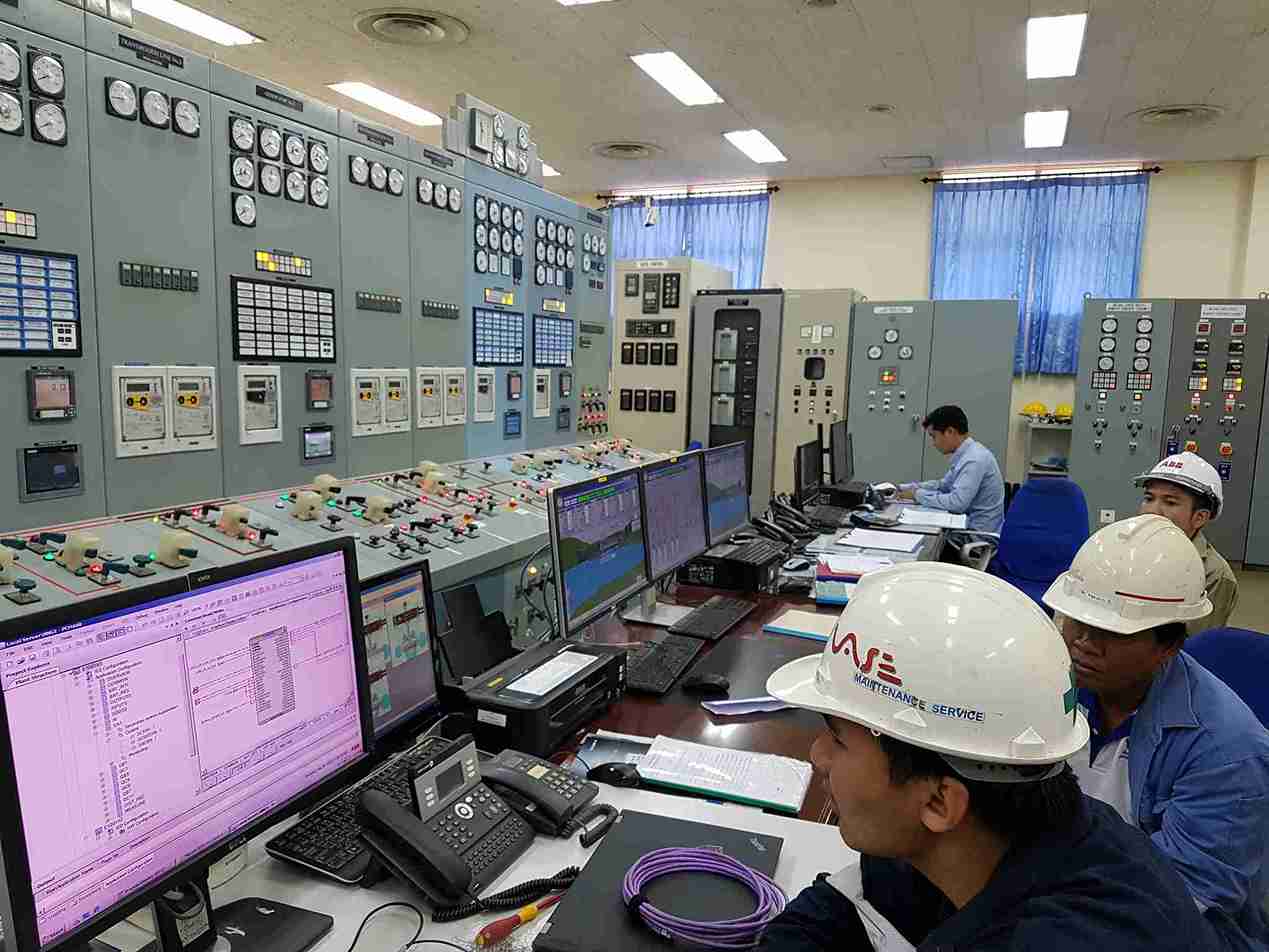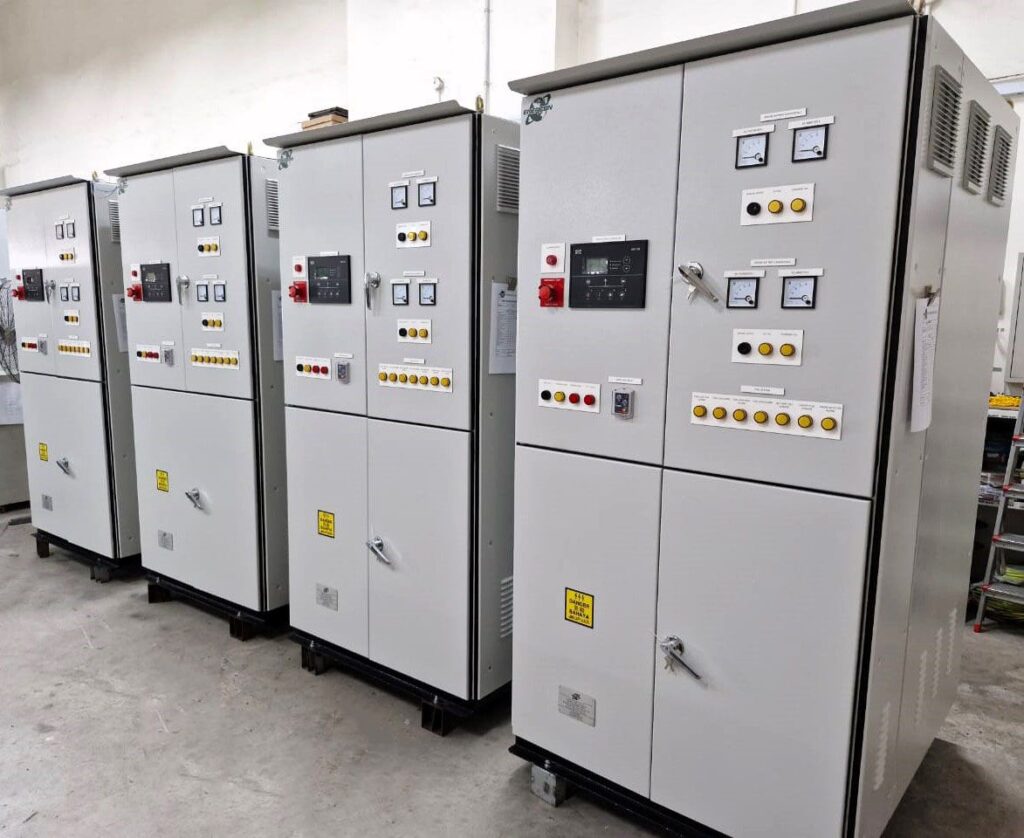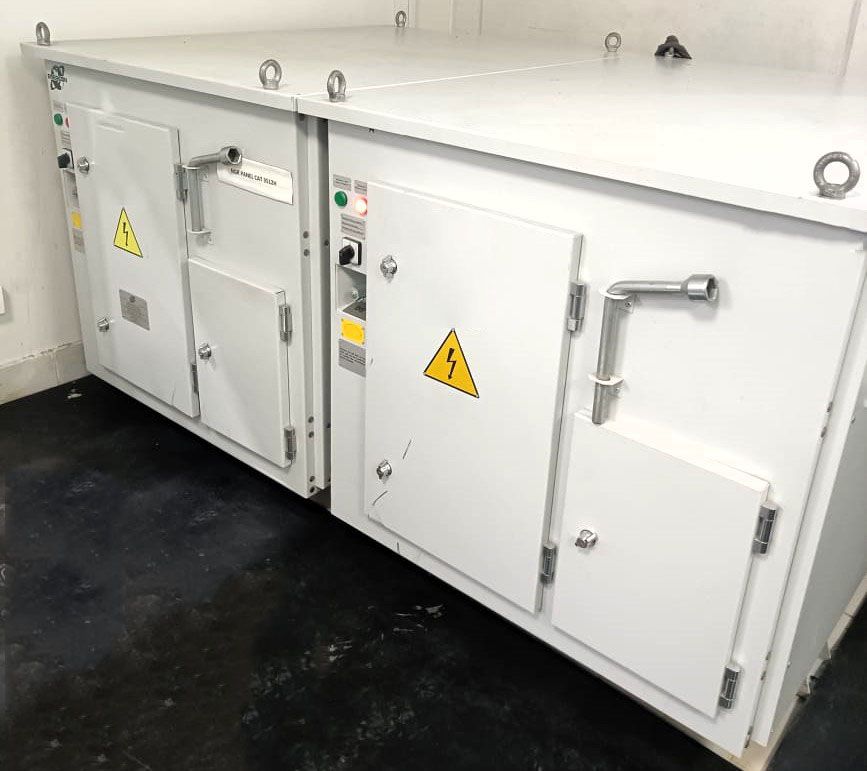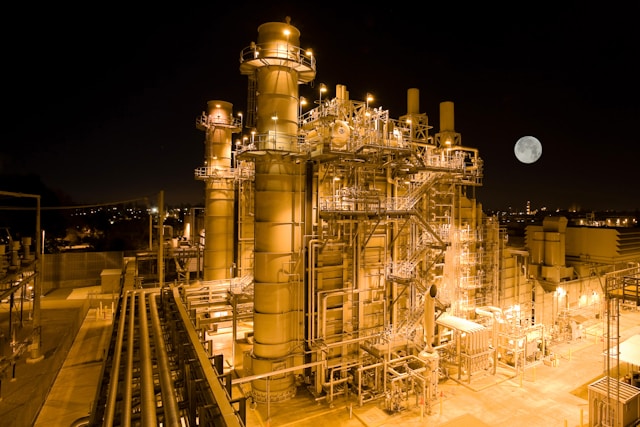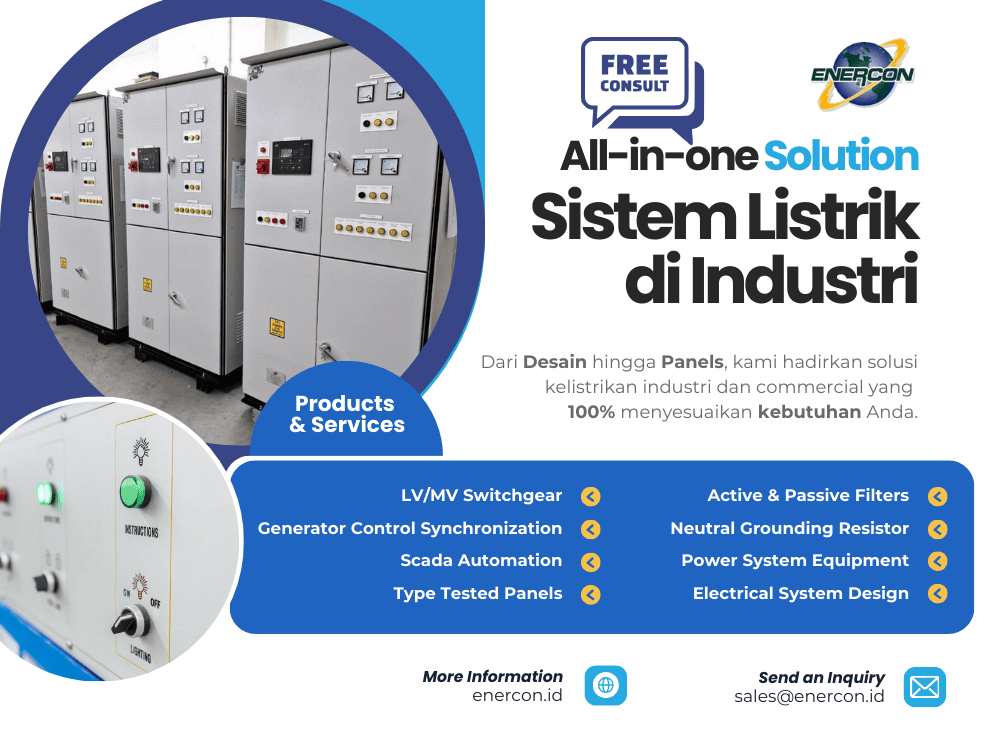SCADA (Supervisory Control and Data Acquisition) systems and PLC (Programmable Logic Controllers) are both vital components in industrial automation, each playing distinct roles. While both are used to control and monitor industrial processes, their functions, applications, and capabilities differ significantly.
To make informed decisions regarding automation systems, it is crucial to understand how these technologies work and when to choose one over the other.
What is a PLC?
A Programmable Logic Controller (PLC) is a specialized computer designed to control industrial processes and machinery. It operates by executing a pre-programmed set of instructions to manage processes in real-time. PLCs are commonly found in industries such as manufacturing, automotive, and robotics, where precise, repetitive tasks must be controlled with accuracy.
Key Features of PLCs:
- Real-Time Control: PLCs are renowned for their ability to control processes in real-time. They receive inputs from sensors, execute logic based on their programming, and send commands to machines or processes accordingly.
- Ruggedness: Built for harsh industrial environments, PLCs are durable, reliable, and capable of withstanding extreme conditions such as high temperatures, dust, and vibrations.
- Cost-Effective for Localized Control: PLCs are highly efficient in controlling specific, localized tasks, such as operating a single machine or a small group of machines.
Applications of PLCs
PLCs are widely used in factory automation, such as assembly lines and robotic arms, as well as in other settings where the control of specific tasks is needed. Their real-time performance makes them ideal for environments where precise, rapid decision-making is essential.
What is a SCADA System?
A SCADA system (Supervisory Control and Data Acquisition) is a software-driven platform used to monitor and control large-scale processes and systems. It provides real-time data acquisition, visualization, and control of multiple processes across distributed locations. SCADA systems are typically used in industries such as utilities, energy, and manufacturing, where extensive monitoring and data collection are required.
Key Features of SCADA:
- Remote Monitoring and Control: SCADA allows operators to monitor and control processes from remote locations. It collects data from sensors, displays it on user interfaces, and provides tools for operators to manage operations.
- Data Visualization and Analytics: SCADA systems excel at presenting complex data in an easy-to-understand format. They can analyze trends, generate reports, and provide valuable insights into system performance.
- Scalability: SCADA systems are highly scalable, making them suitable for controlling and monitoring large, complex operations spanning multiple locations.
Applications of SCADA
SCADA is used in industries that require real-time monitoring and control of distributed systems, such as power generation plants, water treatment facilities, and oil and gas pipelines. Its ability to manage vast amounts of data makes it ideal for large-scale infrastructure projects.

Key Differences Between PLC and SCADA
While both PLC and SCADA are used in industrial automation, their primary roles differ significantly.
Control vs. Monitoring
PLCs focus on controlling specific processes in real-time, managing the logic and operation of machinery. SCADA systems, on the other hand, are primarily used for monitoring and data acquisition across wide networks of processes, allowing operators to make decisions based on data trends.
Hardware vs. Software
A PLC is primarily a hardware component, designed to interact directly with machinery and control systems. SCADA, meanwhile, is a software solution that communicates with PLCs or other devices to provide high-level supervision and control.
Scale of Application
PLCs are suited for localized control tasks—such as operating a single machine—while SCADA systems are designed to manage large, distributed networks of equipment, such as those in a power grid or a water supply system.
Data Handling
PLCs are focused on executing pre-programmed tasks, while SCADA systems are designed to handle and visualize vast amounts of real-time data, offering advanced tools for trend analysis, data logging, and remote control.
Complexity and Cost
SCADA systems tend to be more complex and costly due to their extensive capabilities for data processing and remote control. PLCs, while sophisticated in their own right, are more straightforward and typically more cost-effective for specific, real-time control applications.
Pros and Cons of SCADA and PLC
Advantages of PLCs
- Real-Time Control: PLCs provide fast and precise control, making them ideal for time-sensitive tasks.
- Ruggedness: Designed for industrial environments, PLCs are reliable and durable.
- Cost-Effective for Specific Applications: PLCs are less expensive and simpler to implement for localized control tasks.
Disadvantages of PLCs
- Limited Data Handling: PLCs are not built for extensive data acquisition or analysis, limiting their ability to provide comprehensive system monitoring.
- Single Purpose: PLCs are highly specialized and may require integration with other systems, like SCADA, for broader monitoring and control.
Advantages of SCADA Systems:
- Comprehensive Monitoring and Control: SCADA excels in remote monitoring, data acquisition, and system-wide control.
- Scalability: SCADA can manage operations across multiple locations and integrate with various devices, making it suitable for large-scale industrial applications.
- Data Visualization: SCADA offers advanced tools for analyzing and visualizing data, helping operators make informed decisions.
Disadvantages of SCADA Systems:
- Higher Cost and Complexity: SCADA systems require a significant investment in both infrastructure and training due to their advanced capabilities.
- Security Concerns: SCADA systems, especially those that operate over wide networks, can be vulnerable to cyberattacks, requiring robust security measures.
When to Use SCADA vs PLC
The decision between using a SCADA system or a PLC largely depends on the scope, complexity, and specific needs of the application. Each system excels in different scenarios, and understanding when to use one over the other is crucial for optimizing efficiency, control, and data management in industrial automation.
Use Cases for PLC
1. Localized Control and Real-Time Operation:
PLCs are ideally suited for controlling processes that require fast, real-time decision-making in a localized environment. For example, on a factory floor, a PLC can manage the operation of a single machine or a small group of machines that need to work in sync. Since PLCs are optimized for speed and direct hardware control, they are perfect for environments where response time is critical. Common applications include:
- Assembly lines: Where machinery needs to perform repetitive tasks in a precise and timely manner.
- Robotic arms: Which require real-time control for operations like welding, painting, or packaging.
- Automated manufacturing: Where individual production processes must be tightly regulated.
In these scenarios, the PLC operates as the brain of the system, executing commands based on predefined logic while receiving input from sensors and sending output to actuators. The primary strength of PLCs lies in their simplicity, reliability, and ability to operate in real-time with minimal lag.
2. Small to Medium-Scale Applications
For small to medium-sized industrial processes, PLCs are cost-effective and easier to implement than a full SCADA system. When the need for control is confined to a single plant or facility and doesn’t require extensive monitoring or data analytics, a PLC is often sufficient. This is especially true in industries like:
- Packaging: Where machines need to be controlled individually but don’t require real-time data visualization.
- Textile production: Where specific processes like weaving or dyeing can be handled by a localized control system.
The simplicity and durability of PLCs make them the go-to option for operations that don’t require remote monitoring or vast amounts of data processing.
3. High-Reliability Requirements
PLCs are engineered to withstand harsh industrial environments. They are built to operate reliably under extreme conditions, such as exposure to high temperatures, dust, vibrations, or moisture. This makes PLCs highly effective in industries such as:
- Mining: Where equipment like conveyor belts and crushers need real-time control in rugged environments.
- Oil and gas: Where on-site drilling equipment must be precisely controlled under extreme conditions.
In these industries, reliability and durability are paramount, and PLCs offer a proven solution with minimal downtime.
Use Cases for SCADA
1. Large-Scale, Distributed Systems
SCADA systems shine when control and monitoring are required over large, distributed networks or multiple facilities. In industries where the operator needs to manage multiple locations, plants, or machines from a central location, SCADA’s remote monitoring capabilities are essential. For instance:
- Power distribution: SCADA systems are used to monitor and control electrical grids across vast geographic regions, providing operators with real-time data on load levels, faults, and system performance.
- Water treatment plants: SCADA systems allow operators to remotely monitor the treatment process, flow rates, and reservoir levels across multiple locations in real-time.
- Oil and gas pipelines: Where SCADA is crucial for monitoring pressure, flow, and safety across pipelines that stretch over hundreds or thousands of miles.
In these industries, the ability to collect data from multiple remote sites and control processes from a centralized interface is critical. SCADA’s scalability and data management tools provide an overarching view of system performance, ensuring operations run smoothly across large networks.
2. Data-Intensive Environments
SCADA systems excel in environments where large volumes of data need to be collected, analyzed, and visualized in real-time. This is particularly useful in industries where understanding performance trends and system health is critical for efficiency and decision-making. Some examples include:
- Manufacturing plants: Where SCADA systems can track production rates, detect anomalies, and provide analytics that help improve operational efficiency and predict maintenance needs.
- Renewable energy farms (wind, solar): SCADA systems can monitor and control a network of renewable energy generators, collecting data from wind turbines or solar panels and adjusting their operation based on real-time conditions.
In these scenarios, SCADA’s ability to process vast amounts of data and display it in a user-friendly format allows operators to make informed decisions that enhance productivity and reduce downtime.
3. Remote Monitoring and Control
One of SCADA’s primary advantages is the ability to monitor and control processes remotely. This is particularly valuable in industries where operators need to maintain control over widely dispersed assets or systems. For instance:
- Utilities (electricity, water): SCADA allows operators to remotely monitor consumption rates, detect issues such as leaks or faults, and adjust system parameters without being physically present on site.
- Oil and gas: Operators can manage well sites, storage facilities, and pipelines remotely, optimizing flow and ensuring safety protocols are followed.
With real-time alerts and detailed monitoring tools, SCADA systems enable operators to respond to issues proactively, reducing downtime and preventing costly failures.
Cost Considerations
- PLCs are generally more cost-effective to implement in smaller-scale or single-machine operations, particularly in industries where real-time control is essential but data processing needs are limited. They have a lower upfront cost compared to SCADA systems and are easier to maintain in localized environments.
- SCADA systems, while more expensive to implement due to their complexity, provide greater long-term benefits in large-scale operations. The investment is often justified by their ability to monitor multiple processes, improve operational efficiency, and deliver data-driven insights that enable better decision-making.
Complexity and Training
- PLCs require programming expertise, but once installed, they are relatively simple to operate. Maintenance typically involves minimal training, and their user interfaces are straightforward for operators managing localized equipment.
- SCADA systems, due to their software-driven nature and complex integration with multiple systems, often require more advanced training for operators and IT staff. SCADA systems are designed to handle complex control scenarios, which means additional resources may be needed to manage the infrastructure and data security.
Cybersecurity Considerations
Given the rise of connected devices and the Industrial Internet of Things (IIoT), cybersecurity is a growing concern, especially for SCADA systems, which often span multiple sites and communicate over wide-area networks. SCADA systems require robust security measures, including firewalls, encryption, and monitoring, to protect against potential cyberattacks. PLCs, being localized and less reliant on wide-area networks, typically face fewer cybersecurity risks, though they are still vulnerable if networked with other systems.
Choosing the Right System
- If your application requires real-time control of machinery and processes, especially in localized or small-scale environments, and you don’t need extensive data handling or remote monitoring, a PLC will be the most efficient and cost-effective choice.
- If your operation involves monitoring and controlling multiple locations, requires extensive data collection, or needs the ability to manage complex, distributed systems from a central control room, SCADA is the optimal solution.
Conclusion
Choosing between SCADA and PLC depends on your system requirements, scale of operation, and specific application needs. For small, localized control tasks, PLCs offer real-time precision and reliability at a lower cost. However, if your operation involves large-scale monitoring, remote control, and extensive data analysis, investing in a SCADA system will provide the functionality and flexibility needed to oversee complex processes.


